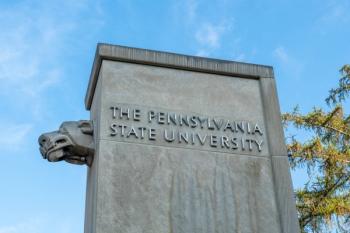
New Spectroscopy Technique Enhances Understanding of Blue Carbon Ecosystems
A recent study from Australia used mid-infrared (MIR) spectroscopy to analyze the spectra of soil core samples taken from vegetated coastal ecosystems (VCEs).
A recent study published in the journal Science of The Total Environment used a new approach involving mid-infrared (MIR) spectroscopy to analyze vegetated coastal ecosystem (VCE) soils (1). The research was a collaborative effort between researchers from two Australian universities (Curtin University and Edith Cowan University) and the Centro de Estudiso Avanzados. The study reveals how MIR spectroscopy can be effective in understanding and conserving critical blue carbon ecosystems.
VCEs, which include tidal marshes, mangroves, and seagrasses, play a pivotal role in carbon sequestration, acting as vital "blue" carbon sinks (1,2). These ecosystems capture and store carbon dioxide from the atmosphere, mitigating the effects of ambient carbon dioxide changes (1,2). However, accurately measuring and analyzing the soil composition and carbon content in these environments has long been a challenge because of the complexity and high costs associated with traditional methods.
Lewis Walden, who was the lead researcher in this study, explored the potential of MIR spectroscopy as being a cost-effective solution to this challenge (1). According to the study, MIR spectroscopy allows for the rapid and accurate estimation of total organic carbon (TOC) and total inorganic carbon (TIC) in soil profiles, paving the way for more efficient and scalable conservation efforts (1). The research team sought to confirm that MIR spectroscopy can work in this application area.
In their study, the research team analyzed 323 subsamples from 106 soil core samples taken from various VCE sites. By recording the MIR spectra of each subsample, they were able to determine the mineral and organic composition of the soils at different depths (1). The spectra revealed distinct mineralogical and organic signatures in the soils, which were found to correlate with the position of the VCE within the seascape (1).
The researchers discovered several important findings. First, they observed a decrease in clay minerals and an increase in quartz and carbonate as the distance from freshwater inputs increased (1). Second, the mineralogy of tidal marsh and mangrove soils was found to differ with depth, showing larger absorptions of carbonate and quartz and weakening absorptions of clay minerals and organics (1). In contrast, the mineralogy of seagrass soils remained consistent with depth.
The researchers also modeled the TOC and TIC contents. To do so, the researchers deployed a regression tree algorithm called Cubist. The models were validated through 10-fold cross-validation, bootstrapping, and testing with a separate random data set (1).
The study’s findings have implications for the conservation of vegetated coastal ecosystems. By improving the understanding of the provenance and composition of VCE soils, the research provides crucial data for quantifying the flux and accumulation of carbon in these ecosystems (1). This is particularly important for informing conservation strategies and managing blue carbon credits (1).
Blue carbon ecosystems are increasingly being recognized for their role in carbon sequestration, and carbon crediting schemes are emerging as a key tool in global efforts to combat ambient carbon dioxide changes (1,2). The ability to accurately measure TOC and TIC in VCE soils is essential for these schemes to function effectively (1). Walden’s research suggests that MIR spectroscopy could offer a scalable and cost-effective method for carbon measurement (1).
In addition to its potential applications in carbon crediting, MIR spectroscopy could significantly improve the overall understanding of blue carbon ecosystems. By providing insights into the formation and accumulation of carbon in VCE soils, the technique can help scientists and conservationists make more informed decisions about protecting these critical habitats (1).
The study’s success in using MIR spectroscopy to analyze VCE soils represents a major step forward in blue carbon science. Traditionally, characterizing the dynamics and provenance of these soils has been a labor-intensive and expensive process, limiting the scope of research and conservation efforts (1). The new methodology offers a more efficient and accessible alternative, making it easier for researchers to conduct large-scale studies of VCEs (1).
References
(1) Walden, L.; Serrano, O.; Shen, Z.; et al. Mid-Infrared Spectroscopy Determines the Provenance of Coastal Marine Soils and their Organic and Inorganic Carbon Content. Sci. Total Environ. 2024, 949, 174871. DOI:
(2) Hatje, V.; Copertino, M.; Patire, V. F.; et al. Vegetated Coastal Ecosystems in the Southwestern Atlantic Ocean are an Unexploited Opportunity for Climate Change Mitigation. Commun. Earth Environ. 2023, 4, 160. DOI:
Newsletter
Get essential updates on the latest spectroscopy technologies, regulatory standards, and best practices—subscribe today to Spectroscopy.





